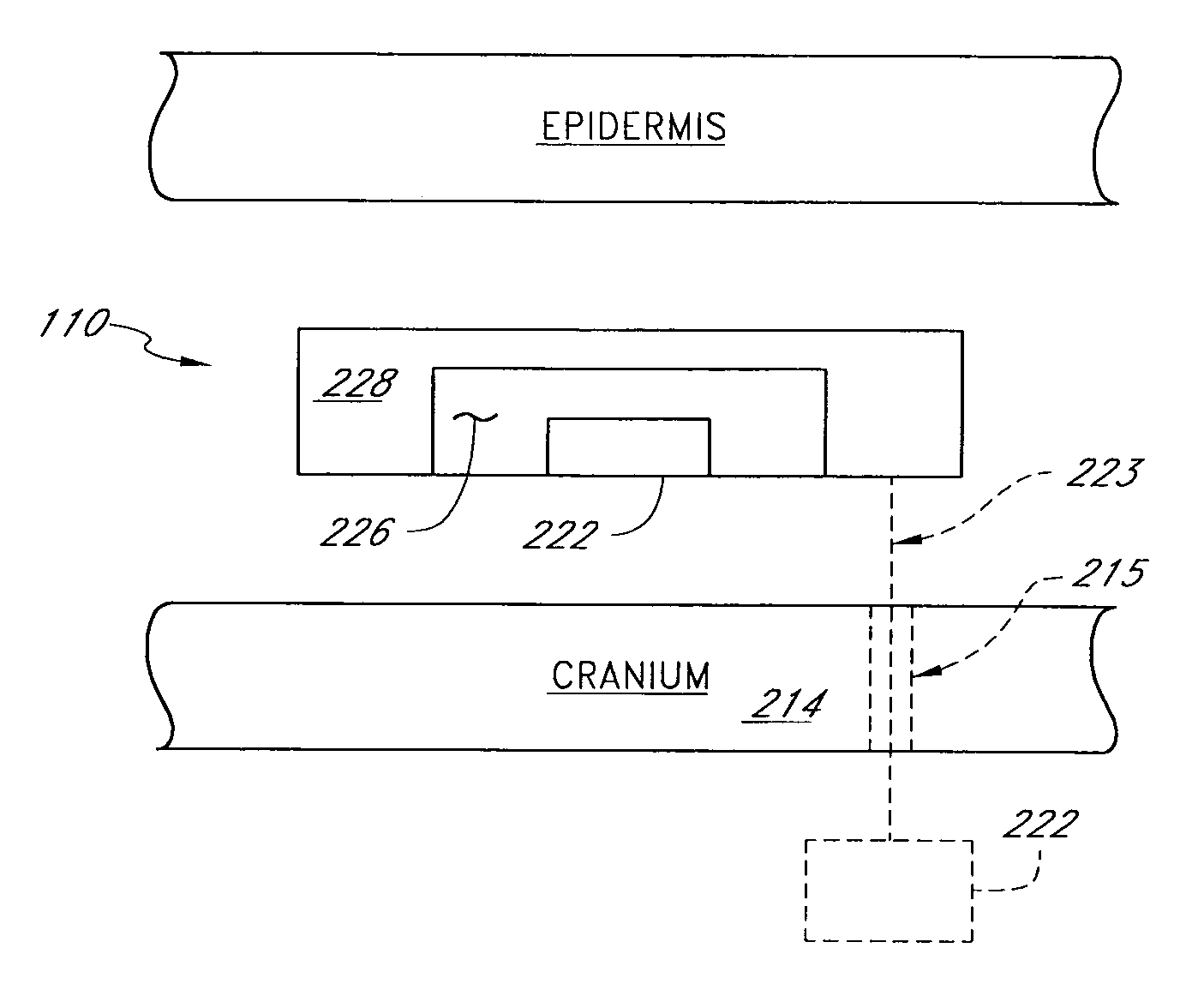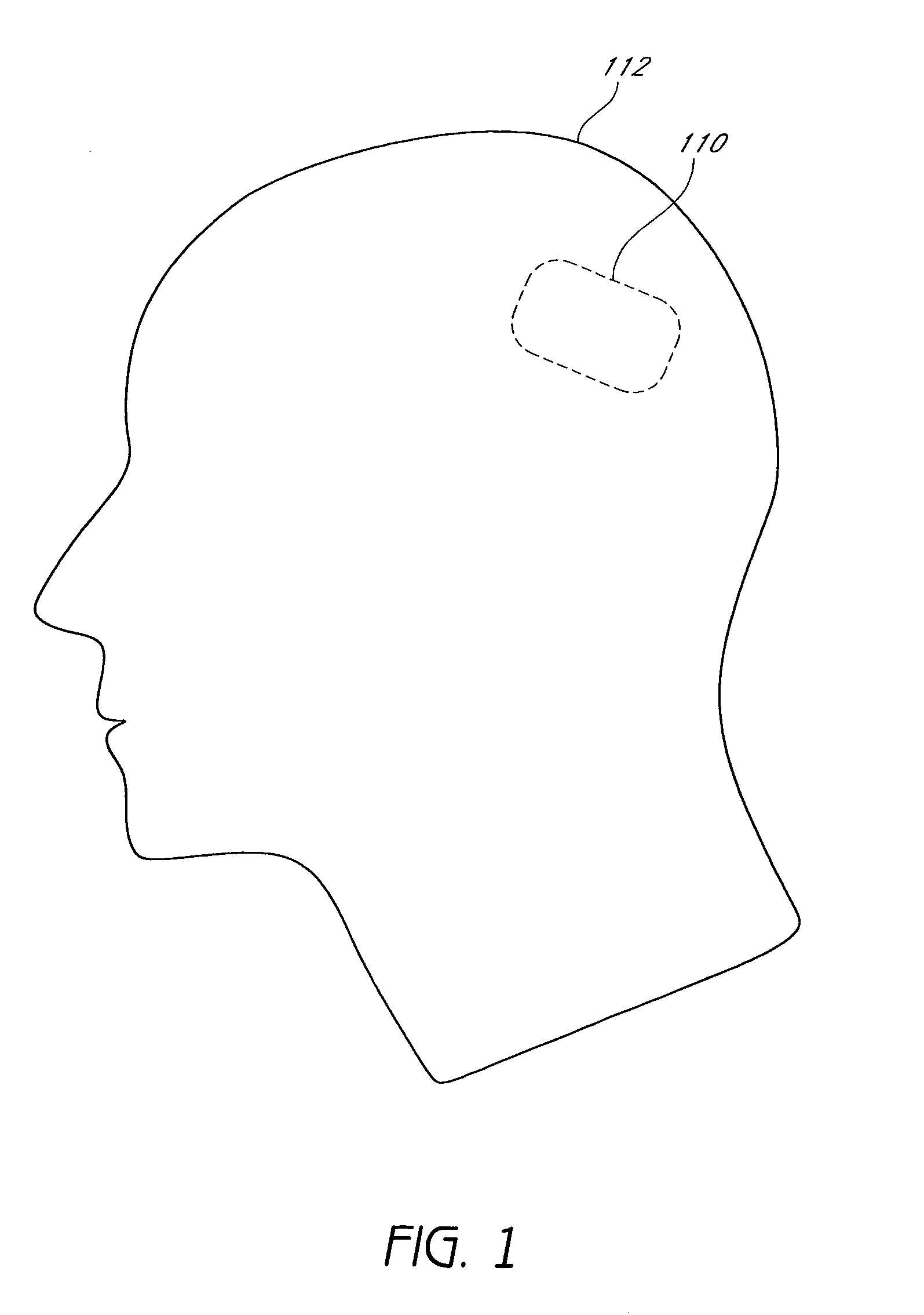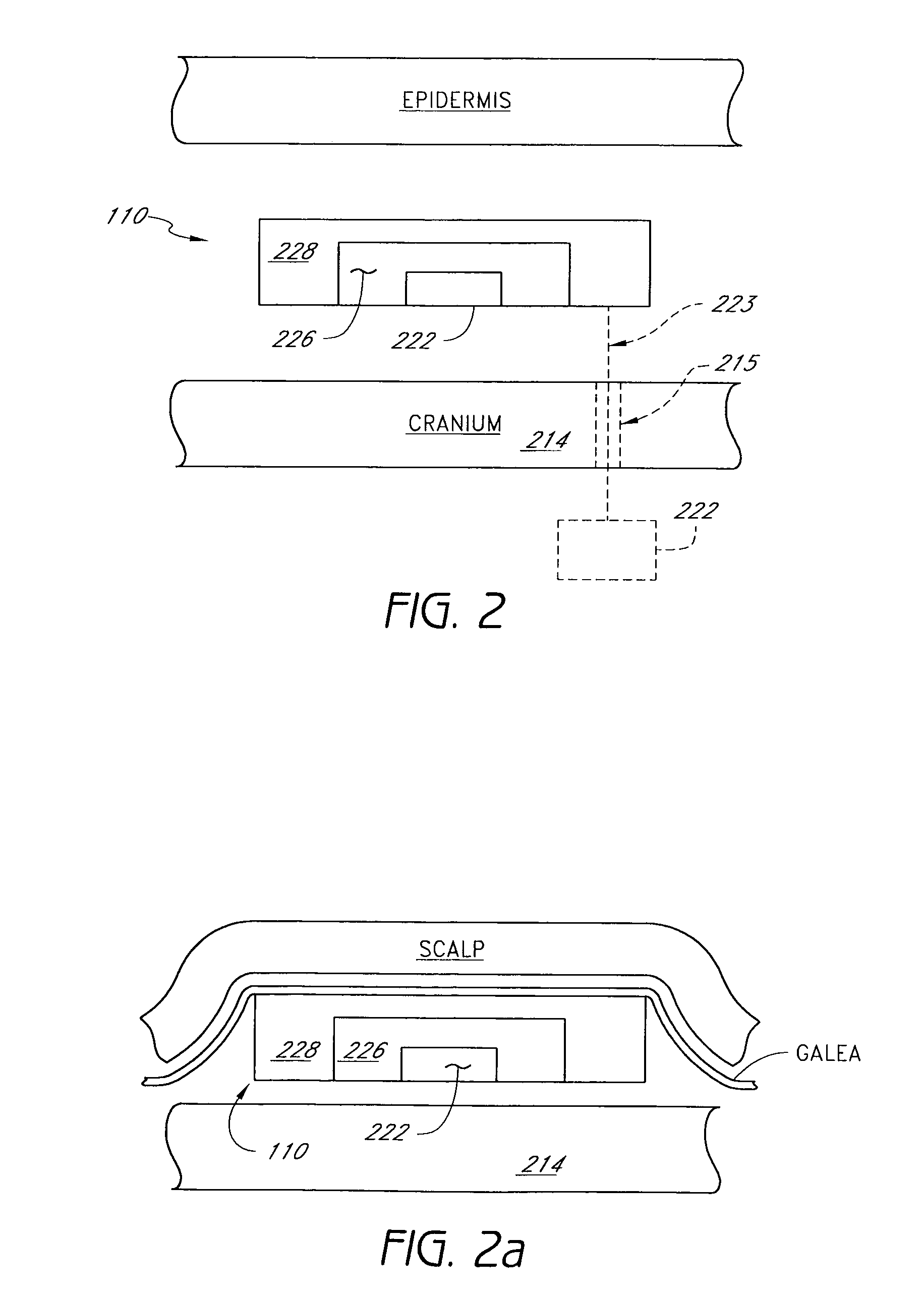Implantable seizure monitor
a seizure monitor and implantable technology, applied in the field of implantable seizure monitors, can solve the problems of physical impairment, deterioration of other brain functions (including cognitive function), frequent limitation of sufferers, etc., and achieve the effect of enhancing diagnosis and adaptation of a treatment for an epileptic patien
- Summary
- Abstract
- Description
- Claims
- Application Information
AI Technical Summary
Benefits of technology
Problems solved by technology
Method used
Image
Examples
Embodiment Construction
[0084]The inventions described herein, with reference to detailed illustrative and exemplary embodiments, are described in the context of an implant disposed between the epidermis and skull of a human patient. However, the inventions disclosed herein can be used in other context as well. It is apparent from the description provided below that the systems, apparatuses, and methods can be embodied in a wide variety of forms. Consequently, the specific structural and functional details disclosed herein are only representative and do not limit the scope of the inventions.
[0085]FIG. 1 depicts an implantable recording device 110 implanted in a patient 112, according to an embodiment. In this embodiment, the implantable recording device 110 comprises a small self-contained brainwave detecting device. As the term is used herein, a brainwave detecting or recording device is a device capable of detecting or predicting ictal activity (or other neurological events) for providing data useful in ...
PUM
 Login to View More
Login to View More Abstract
Description
Claims
Application Information
 Login to View More
Login to View More - R&D
- Intellectual Property
- Life Sciences
- Materials
- Tech Scout
- Unparalleled Data Quality
- Higher Quality Content
- 60% Fewer Hallucinations
Browse by: Latest US Patents, China's latest patents, Technical Efficacy Thesaurus, Application Domain, Technology Topic, Popular Technical Reports.
© 2025 PatSnap. All rights reserved.Legal|Privacy policy|Modern Slavery Act Transparency Statement|Sitemap|About US| Contact US: help@patsnap.com



